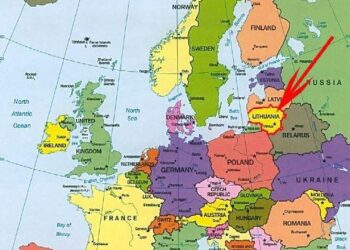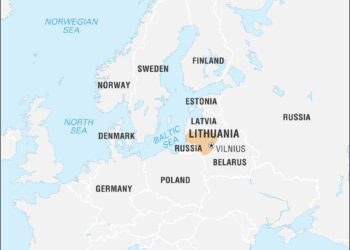Germany has announced the deployment of troops to NATO’s eastern flank, reinforcing the alliance’s defensive posture amid rising tensions in Eastern Europe. This move underscores Berlin’s commitment to collective security and deterrence, as concerns mount over regional stability. The deployment marks a significant step in Germany’s engagement with NATO’s strategic efforts to bolster the alliance’s presence along its vulnerable eastern borders.
Germany Strengthens NATO’s Eastern Flank with Troop Deployment
In a strategic move to bolster security amid rising tensions in Eastern Europe, Germany has announced the deployment of additional troops to reinforce NATO’s eastern frontier. This deployment comes as part of a broader NATO initiative to enhance deterrence capabilities against potential threats from neighboring regions. German forces will collaborate closely with partners stationed in Poland and the Baltic States, ensuring a robust defensive posture that underscores the alliance’s commitment to collective defense under Article 5.
Key aspects of the deployment include:
- Approximately 1,000 soldiers assigned to rapid response units
- Advanced reconnaissance and surveillance equipment to monitor border activities
- Joint military exercises scheduled for the coming months to improve interoperability
- Enhanced logistical support designed to maintain sustained operations in the region
| Deployment Detail | Specification |
|---|---|
| Number of Troops | ~1,000 |
| Primary Locations | Poland, Estonia, Latvia, Lithuania |
| Support Focus | Rapid Response & Reconnaissance |
| Duration | Indefinite with periodic reviews |
Strategic Implications for European Security and Deterrence
The deployment of German troops to NATO’s eastern flank marks a decisive shift in the alliance’s approach to collective security. This move not only enhances the immediate defensive posture but also signals a robust commitment to deter any potential aggressions in a region marked by increasing geopolitical tension. The presence of well-trained German forces serves as a tangible reassurance to NATO’s eastern members, reinforcing the alliance’s ability to respond rapidly and cohesively to emerging threats.
Key strategic impacts include:
- Strengthening NATO’s rapid response capabilities in Eastern Europe.
- Enhancing interoperability among alliance members through joint exercises and operations.
- Increasing pressure on potential adversaries by demonstrating unity and readiness.
- Contributing to regional stability amid evolving security challenges.
| Aspect | Impact | Long-Term Outlook |
|---|---|---|
| Force Projection | Improved presence near strategic borders | Enhanced deterrence capacity |
| Alliance Cohesion | Stronger political-military ties | Greater unified decision-making |
| Security Dynamics | Heightened vigilance in the region | Reduced escalation risks |
Recommendations for Enhanced NATO Coordination and Regional Stability
To bolster NATO’s collective defense and ensure enduring stability across the alliance’s eastern flank, it is imperative to deepen military interoperability and intelligence sharing among member states. Establishing joint training exercises that emphasize rapid deployment capabilities will enhance readiness and deter potential aggressors more effectively. Furthermore, integrating cyber defense units and expanding surveillance infrastructure are essential steps to address the multifaceted nature of modern security threats, thus paving the way for a resilient and adaptive NATO posture.
Key Strategic Actions for NATO Coordination:
- Enhance real-time communication channels between allied forces
- Increase joint logistics and supply chain coordination
- Standardize equipment and operational protocols across units
- Expand collaborative defense innovation programs
- Strengthen diplomatic engagement with regional partners
| Focus Area | Priority | Expected Outcome |
|---|---|---|
| Rapid Deployment Forces | High | Quicker response time to crises |
| Cyber Defense Integration | Medium | Improved resilience against digital threats |
| Joint Intelligence Sharing | High | Enhanced situational awareness |
| Regional Diplomatic Outreach | Medium | Strengthened alliances and trust |
Future Outlook
As Germany reinforces NATO’s eastern flank with additional troops, the move underscores the alliance’s commitment to collective defense amid escalating regional tensions. The deployment marks a significant step in Germany’s evolving role within NATO, reflecting broader strategic calculations in response to security challenges in Eastern Europe. Observers will be watching closely as this development unfolds, with implications for the balance of power and stability across the continent.
















